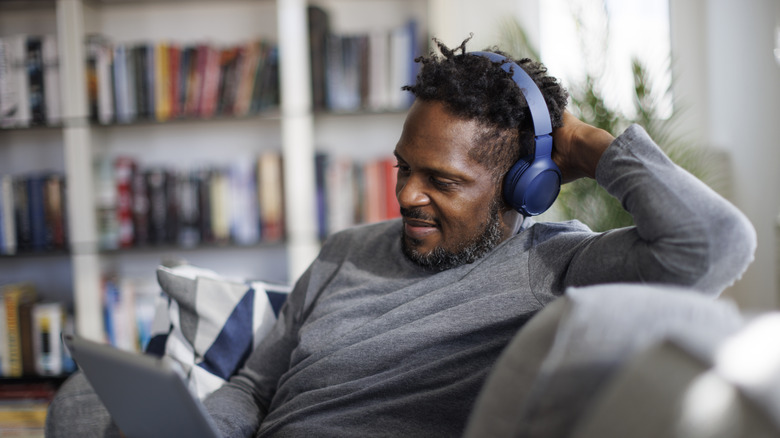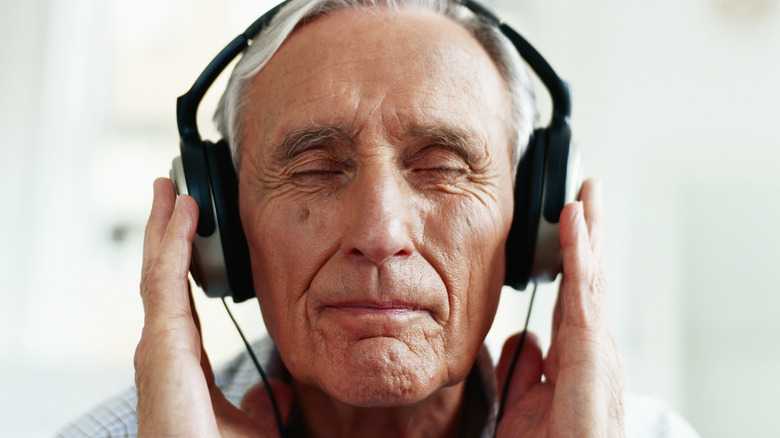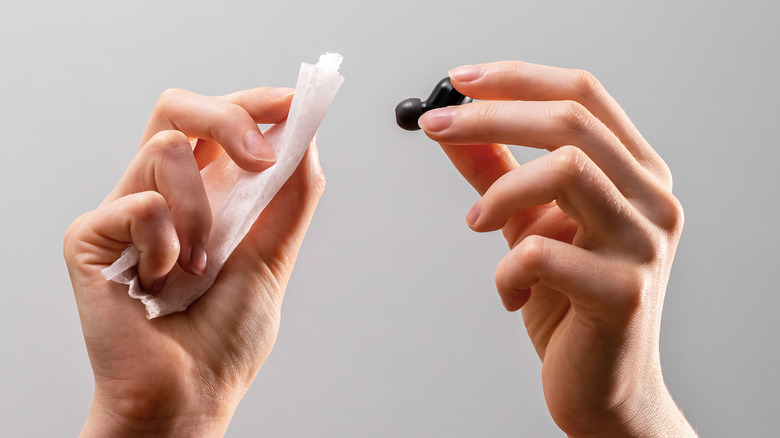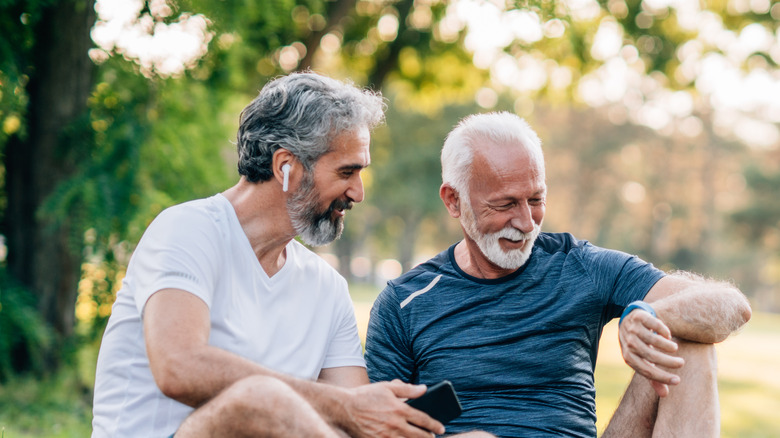Earbuds Or Headphones Hurting Your Ears? Here Are Some Things That May Fix The Issue
In our modern world, headphones and earbuds have become crucial tools in our everyday lives. From consuming content or music on our mobile devices, making a call to our loved ones, to using them for meetings on our phones or work laptops, headphones and earbuds help us connect with each other better and enjoy the world around us. Unfortunately, it's not always a pleasant experience for everyone. In some cases, headphones and earbuds can potentially hurt people's ears.
While there are many possible reasons behind a hurting ear, it's important to know that experiencing any pain while using headphones or earbuds shouldn't be normalized. Pain is your body telling you that something is wrong, and if you ignore it, it could lead to unnecessary discomfort or long-term damage. So, if you're trying to figure out what's making your ears hurt and how to make it stop for good, here are some possible reasons and how to fix them.
Choose the right fit
In 2023, The Independent reported how Twitch streamer "Curtoss," who was shaving his head for charity, was shocked to find an indent on his scalp due to long-term headphone use. Although a head indent is likely a temporary issue that will improve with time and didn't cause him any pain, it is a very visual sign when something isn't right with your device's fit.
Streamer finds a headphone indent on his head while shaving for charity pic.twitter.com/3RiIlnjYeX
— Dexerto (@Dexerto) June 5, 2023
With so many headphones worth buying in the market, the fit should definitely be a factor when you choose which one to take home. Because each person's head is slightly different, there's no one perfect design for everyone.
When it comes to headphones, there are three common designs, which you can choose from: in-ear, over-ear, and on-ear. In addition, there are a few telling factors that you should consider when considering comfort, such as the weight and materials.
For example, you'll want headphones with a headband that is tight enough for the ear pads to stay in place but not too tight that you feel numbness in your outer ear. As for the ear pads, the amount of padding and material used can impact how breathable it is.
Before purchasing your earbuds or headphones, it's best to check reviews from other users who own the same model. Afterward, you can visit a physical store and try them on yourself. If you're buying them from an online retailer, you can check if they have return policies that cover a change of mind.
Reduce the volume
According to the National Library of Medicine, noise-induced hearing loss is the most common type of sensorineural hearing loss with approximately 1.7% of people worldwide experiencing it. In 2021, the study reported that individuals who use earphones in noisy environments were at a 4.5-fold higher risk of hearing loss. In addition, it claimed that adolescents had an 8.4 times higher risk of having a subjective hearing problem when using earphones than those who did not.
For most personal listening devices, its maximum volume can reach up to 110 dB. However, the Centers for Disease Control and Prevention cautions that noise above 100 dB can cause hearing loss in less than 5 minutes. Because your headphones or earbuds are within range of devices that can cause hearing loss, it's best to avoid using them in already noisy places, where you are more likely to increase the volume.
And while you can definitely make your iPhone louder, it's best to limit it to a safe level. The Hearing Health Foundation claims that a safe level of listening is 50 to 60% of the max volume and that sounds above 70 dB will damage your hearing over time. Thankfully, there are plenty of ways to improve the sound quality on Spotify without adding long-term damage to your ears.
Reduce your listening time
While it can be easy to blame technology for our problems, sometimes you have to admit that you're the problem. Regardless of what model of earbuds or headphones you own, listening for long periods of time without breaks can also cause ear discomfort.
For people in loud environments for work, the Occupational Safety and Health Administration (OSHA) requires employers to offer hearing protection for employees with an average exposure of 85 dB for more than eight hours. But for people playing sounds on their headphones or earbuds, the safe number of hours can decrease drastically for every increase in dB.
KidsHealth shares that doctors recommend the 60% or 60-minute rule when it comes to earbuds to avoid noise-induced hearing loss for teens. This rule recommends that you listen to music, play movies or video games at no more than 60% max volume, and limit earbud use to 60 minutes at a time.
Although it's not a hard and fast rule, you may want to consider regularly taking off your earbuds or headphones between long uses to give your ears a rest, such as between games or calls. In fact, if you live alone at home and don't have neighbors nearby, you can opt to use speakers instead.
Clean your earbuds or headphones
In some cases, your ears might feel uncomfortable due to itchiness or an allergic reaction. Often, this can be caused by the build-up of particles in your listening device, including dust, dirt, dry skin, or even ear wax. Aside from hurting your ears, having dirty headphones can also lead to muffled sounds. To avoid this, it's best to clean your device regularly. In an ideal world, you can obviously clean listening devices with every use. But if you can't, The New York Times recommends cleaning your headphone ear pads and earbuds at least once a week.
Depending on your specific earbud or headphone model, brands may have different recommendations on how to clean them properly. If you don't, it could lead to your warranty being voided or your device being unusable. For AirPods users, Apple recommends wiping its case and earbuds with a soft, dry, lint-free cloth. In addition, it also shares AirPod-safe disinfectants, such as the Clorox Disinfecting Wipes, isopropyl alcohol wipes, and 75% alcohol wipes.
On the other hand, cleaning your AirPods Max or other Headphones may require a little more work, especially because you have more parts to worry about, such as the ear pads and headband. Additionally, it's good to keep your listening devices in the correct container when not in use, which can help avoid the build-up of particles like dust and debris.
Have a more comfortable listening experience
Whether it's changing your device to one with a better fit, reducing the volume, lessening your listening time, or making an effort to clean more often, finding the root cause of the issue is important so you can prevent or manage any future pain or discomfort. Until the pain goes away, it might be best to avoid making it worse by sticking to speakers in the meantime.
If you've tried all of the above and your ears are still hurting when using your earbuds or headphones, you might have a medical issue that needs to be addressed. If you suspect that you may have a more serious condition, it's best to consult a medical professional as soon as possible. Depending on what kind of pain you are experiencing, you can consult an audiologist or ENT. If you're not sure, a general practitioner will be able to direct you to the right health professional who can recommend the best course of action to help resolve your listening issues.





